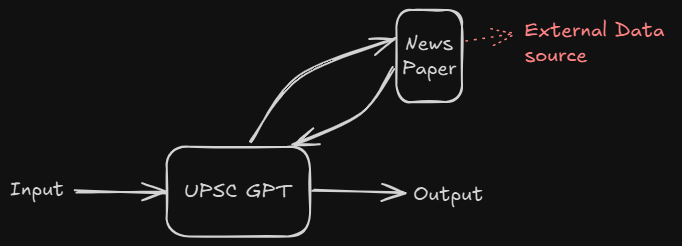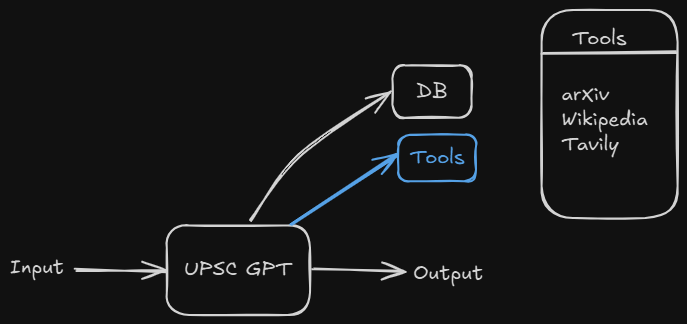Physical Address
304 North Cardinal St.
Dorchester Center, MA 02124
Physical Address
304 North Cardinal St.
Dorchester Center, MA 02124

Retrieval Augmented Generation, or RAG, is a technique that enhances the capabilities of Large Language Models (LLMs) by allowing them to retrieve information from external sources. This is especially useful in scenarios where the base model may not have access to the most recent or domain-specific data. RAG helps the model “look up” information from a vector database, making the responses more accurate and up-to-date.
Imagine you are a UPSC aspirant using a custom chatbot like “UPSC GPT,” trained on just one month of data. If you ask a question about today’s current affairs, it won’t have an answer because it lacks real-time updates. To work around this, you consult a newspaper and manually feed that information to the model.

Over time, if you collect and store 30 days’ worth of newspapers in a vector database, the model can refer to this collection when answering future questions. This is how traditional RAG functions: the user is responsible for gathering and storing external data, which the model can then retrieve from as needed.

Agentic RAG takes this concept to the next level by automating the retrieval process. Instead of the user manually inputting data, the system is integrated with tools like arXiv for research papers, Wikipedia for definitions, and Tavily for real-time web searches. When you ask a question that requires up-to-date or detailed information, the model automatically decides which tool to use and pulls the data itself. This reduces human effort and increases efficiency.

These tools are typically integrated into the model using APIs. However, there’s a catch—if any tool changes its interface or is replaced with a different one, the API code must be updated manually. To solve this issue, an advanced approach called Model Context Protocol (MCP) is introduced. MCP allows seamless integration of new tools without the need to modify the API code, making the system more adaptable and scalable.
While Generative AI focuses on creating content using a single model based on given prompts and data, it generally lacks autonomy. It’s reactive in nature, responding only to what the user asks.
On the other hand, Agentic AI is built around the concept of multiple AI agents working together. These agents can communicate, collaborate, and coordinate tasks. For instance, one agent may handle web search, another may summarize content, while a third agent verifies facts. This collaborative framework mimics how human teams work and leads to more intelligent and efficient systems.
From manually adding newspapers to creating intelligent systems that use tools autonomously, the journey from Traditional RAG to Agentic RAG highlights the power of automation and collaboration in modern AI. Whether you’re a UPSC aspirant or a tech enthusiast, understanding this progression can help you appreciate how AI is becoming more proactive, reliable, and intelligent.